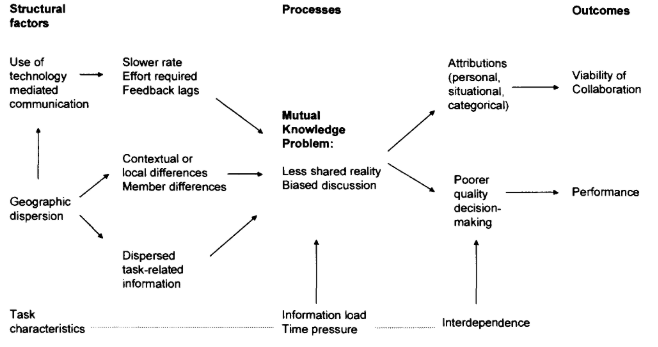Dislocated versus Co-Located Team Members
We could consider reducing the distance of communication between team members themselves as another way forward in decreasing cognitive load. Specifically, this could be done by avoiding spreading team members across different locations and, especially, time zones.
Dispersed team members will have scattered knowledge, making it difficult to establish the mutual understanding that enables proper team task completion. See “The mutual knowledge problem and its consequences for dispersed collaboration”: https://www.jimelwood.net/students/grips/man_group_comm/cramton_2001.pdf

The consequences? A reduction in collaboration between team members and across teams due to the cost and extra cognitive load of managing remote collaboration. This leads to individual and team ownership of work instead of shared ownership.
We acknowledge that current tooling and technology makes things easier for people to work remotely and collaborate (digital whiteboards, video call tooling, virtual offices…). It can make things work, but not yet as effectively as in-person collaboration does. From experience, we observe that in-person collaboration—sharing the workspace, coffee machine, lunch space, etc.—makes things smoother and more effective, even today (May 2024). The extra cost of making it work remotely might reduce willingness and endurance to collaborate across the boundaries of the individual, and, as is observed more frequently, the team. This generates a feeling of being forced to adopt Organizational Design Pattern 1—Technical Ownership, as well as all its consequences.